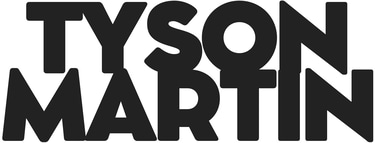CISO Decisions Should Improve Your Company’s Revenue, Culture, Compliance, Risk, and Resilience
Why CISO Decisions Should Matter to Every Business Leader


CISO Decisions Should Improve Your Company’s Revenue, Culture, Compliance, Risk, and Resilience
Why CISO Decisions Should Matter to Every Business Leader
It’s time to reframe the role of your CISO.
Too many CEOs, founders, and board members see cybersecurity as a necessary evil a line item on the budget that exists to “keep the bad guys out.” But in today’s environment, the most effective CISOs don’t just reduce risk. The decisions they make can, and should, accelerate revenue, shape culture, ensure compliance, manage risk wisely, and strengthen organizational resilience.
If you think of your CISO only in terms of firewalls and incident reports, you’re leaving tremendous strategic value on the table.
Let’s walk through how a business-aligned CISO can become a growth engine, a cultural catalyst, and a cornerstone of trust and innovation for your company.
PART 1: Cybersecurity as a Growth Strategy, Not a Speed Bump
Most organizations treat security as a guardrail. But the smartest companies embed it into product design, customer experience, and go-to-market execution unlocking faster sales cycles and bigger deal sizes.
A CISO who aligns with revenue understands this:
✅ They shorten enterprise sales cycles by building trust earlier in the buying process.
✅ They partner with marketing and sales to provide clear, confident answers to security questionnaires and risk assessments.
✅ They reduce the friction that keeps you out of regulated or high-security markets.
✅ They help your business earn certifications that open doors (SOC 2, ISO 27001, FedRAMP, etc.).
✅ They make secure-by-design products that buyers feel safe adopting.
When your CISO is included early in product development and sales planning, security becomes a revenue unlock, not a last-minute barrier.
PART 2: A Strong Security Culture Is a Strong Business Culture
Your company’s culture isn’t defined by ping-pong tables or Slack emojis. It’s defined by how you handle accountability, trust, and responsibility which are all foundational to cybersecurity.
When your CISO operates with business fluency and emotional intelligence, they help create a culture that:
🛡 Builds trust from the inside out.
🚀 Encourages employees to speak up when they spot something suspicious.
🤝 Aligns every function around shared responsibility for data and customer protection.
💡 Embeds security into how people think, not just into the tools they use.
A healthy security culture isn’t one of fear or red tape — it’s one where teams know what’s expected, have what they need, and feel confident executing.
Security isn’t just technical it’s cultural. And culture impacts everything: talent retention, brand trust, innovation, and long-term success.
PART 3: Compliance Should Be a Byproduct, Not the Goal
Boards and CEOs often ask, “Are we compliant?"
That’s the wrong question. Instead, ask:
“Are we operating in a way that naturally satisfies the intent of the regulations that govern us?”
“Does our CISO ensure that we can prove our compliance without disrupting operations?”
A mature CISO doesn’t just react to compliance requirements — they build proactive, integrated systems that:
📊 Satisfy frameworks like PCI DSS, HIPAA, GDPR, CCPA, SOX, and NIST.
🔄 Map to evolving regulations and industry expectations.
🧠 Reduce the effort it takes to “check the box” during audits or assessments.
The result? You move faster with less friction, you pass audits with less scramble, and you build trust with regulators and customers.
Compliance isn’t about slowing down. It’s about showing your work — and when your systems are aligned, it’s automatic.
PART 4: Risk Isn’t a Cost Center — It’s a Strategic Tradeoff
A CISO’s job isn’t to eliminate all risk. That would grind innovation to a halt.
Their job is to help your executive team and board make smart, strategic tradeoffs between innovation, investment, and exposure.
The right CISO speaks your language not in acronyms, but in business impact:
“If we roll out this product without X control, our exposure to vendor risk rises by 17%.”
“If we delay implementing this control, here’s the scenario we’d likely face and the financial hit we could take.”
“If we invest in this, we can reduce regulatory scrutiny and expand into these two new markets.”
Risk decisions are business decisions. Your CISO should equip you to make them in a way that balances growth with protection.
This isn’t about fear it’s about informed leadership.
PART 5: Resilience Is a Competitive Advantage
The truth is, every business will eventually face a cyber event whether it’s ransomware, data theft, third-party compromise, or employee error.
The companies that survive and thrive are the ones that are resilient.
A modern CISO doesn’t just work to prevent breaches. They prepare your organization to respond and recover quickly with:
Clear incident response and crisis communication plans
Cross-functional tabletop simulations
Communication strategies for boards, customers, regulators, and the public
Post-incident analysis that feeds back into better strategy
Resilience = speed of recovery
If your business can take a hit and keep moving while competitors stall — that’s not just operational maturity. That’s market advantage.
PART 6: How CEOs and Boards Can Support Strategic CISOs
Your CISO can only deliver this kind of value if:
They’re given a seat at the leadership table
Their role is framed around business value, not just compliance
You hold them accountable for communication and cross-functional alignment
You invest in security like you invest in growth
Ask yourself:
Is our CISO involved early in product and market decisions?
Can our CISO clearly explain how security supports growth and risk appetite?
Are we measuring success based on business outcomes, not just blocked threats?
A great CISO is a force multiplier — but only if they’re positioned as a strategic leader, not a reactive technician.
PART 7: Metrics That Matter — What You Should Be Tracking
Most CISOs report on threat activity, number of alerts, or vulnerability scans. Those numbers matter but they don’t mean much to the board unless they’re tied to outcomes.
Start asking for metrics that show:
Sales acceleration from faster security reviews
Compliance velocity (how quickly you align with new frameworks)
Risk-adjusted decisions (with tradeoffs clearly explained)
Employee engagement in security culture (measured via participation or behavior)
Response readiness (measured by simulation outcomes or recovery times)
These are the metrics that link cybersecurity to business performance.
CONCLUSION: The Modern CISO Is a Growth Partner
If your CISO is only in the room when something breaks, you’re using a Ferrari to mow the lawn.
The modern CISO is a revenue enabler, a culture shaper, a compliance accelerator, a risk translator, and a resilience architect.
When you position your CISO as a strategic partner and when you evaluate their impact through a business lens — you create an advantage that most of your competitors haven’t figured out yet.
Call to Action for CEOs, Founders, and Board Members
Don’t wait for a breach to realize what your CISO could have done for you.
Start today:
Reframe the CISO role around business outcomes.
Include your CISO in growth, go-to-market, and innovation discussions.
Ask for risk-based tradeoff frameworks, not just red/yellow/green dashboards.
Invest in a culture of security-informed decision making.
The companies that win in the next decade won’t just be the fastest or cheapest they’ll be the most trustworthy, most resilient, and most aligned.
And your CISO? They’re the key to getting there.
